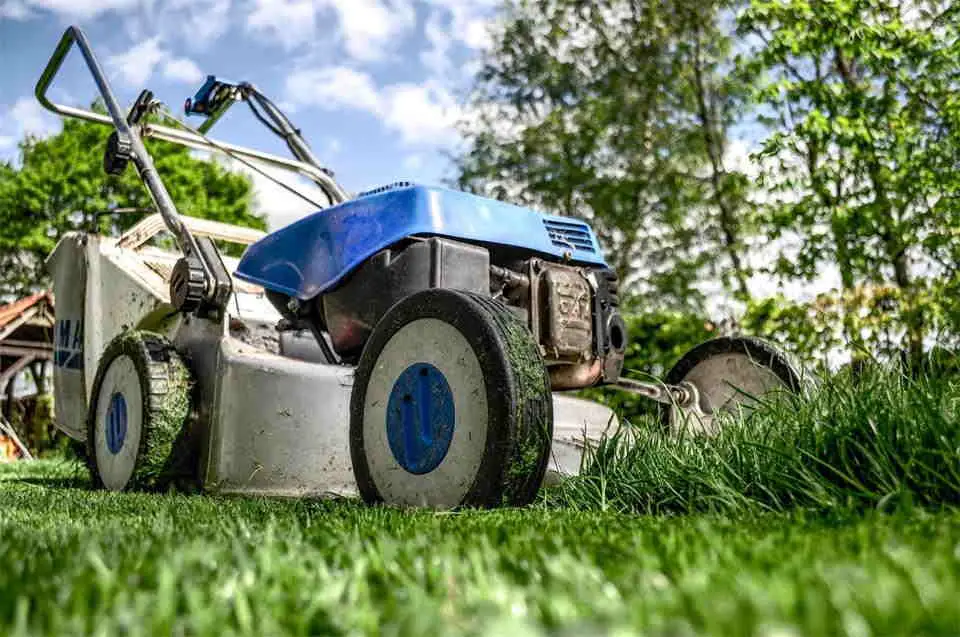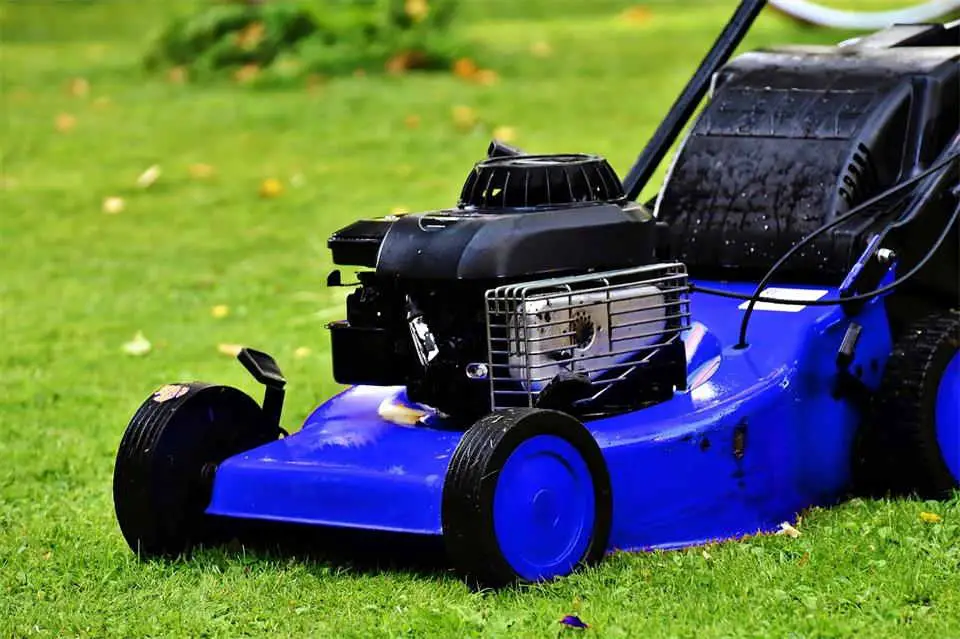Lifestyle
When Robots Mow and Humans Plant: A Balanced Garden Approach

Is automation ruining the soul of gardening, or is it finally giving us space to enjoy it again? Gardening has long been about slowing down, getting hands in the dirt, and feeling a sense of purpose from nurturing something real.
But now, robotic mowers quietly buzz across lawns, drip systems time the watering to the second, and motion sensors know when a squirrel gets too close to your tomatoes. Some say it’s the future, others say it’s the end of authenticity.
The truth probably lives somewhere in between.
What Automation Actually Helps With
There’s a reason tech has found its way into the garden. Some tasks are repetitive, exhausting, or even damaging when done too often by hand. Here’s what machines genuinely do well:
- Mowing the lawn – This is one of the most time-consuming outdoor chores. Robots can handle it consistently, even when you’re busy.
- Watering schedules – Automated watering avoids over or under-watering, especially during dry seasons.
- Pest control alerts – Sensors or smart setups can catch signs of problems early, saving a whole bed of vegetables.
- Soil monitoring – Measuring moisture and nutrient levels helps avoid guesswork, particularly for beginners.
- Leaf collection – Certain systems can vacuum or sweep up debris, keeping paths clear without daily raking.
By taking these types of chores off the to-do list, people have more energy and time to focus on the parts of gardening that can’t be replicated by tech. You can let your robot lawn mower handle cutting the grass while you focus on the more creative and artistic elements of your garden!
The Parts That Still Need Human Hands
Even with robots in the mix, the heart of gardening is still deeply human. Technology might keep things tidy, but it doesn’t know your vision for the space. That’s your job.
Planting, designing, choosing what grows where… these are all decisions that come from instinct, experience, or a bit of creative trial and error. And let’s not forget the emotional side. Digging, planting, and harvesting bring satisfaction and peace that machines can’t deliver.
Here’s what humans still do best in the garden:
- Planning layouts – Knowing what plants grow well together and how much space each one needs isn’t something a machine can fully understand in context.
- Sowing seeds – This first step in the life cycle still feels better by hand. It’s personal.
- Pruning and training – Whether it’s shaping a rose bush or supporting tomato vines, this kind of care needs eyes, hands, and a feel for the plant’s rhythm.
- Harvesting – Picking fruit or vegetables at the perfect moment is an art form, one based on touch, smell, and look, not algorithms.
- Creative choices – Color combinations, textures, seasonal shifts, and wild ideas like growing edibles in a flower bed all come from human vision.
Striking the Right Balance
The key isn’t to reject automation or rely on it completely. It’s about giving it the right jobs. Let it do the parts that drain time, but don’t offer much joy. Keep the parts that feed your creativity and sense of purpose.
Think of it like hiring a helper, not a replacement. The helper cuts the lawn and waters the beds, so you can spend your energy shaping the space and connecting with it.
What balance can look like:
- Use a robotic mower to keep the lawn short, but spend weekends reshaping the edges or planting wildflowers.
- Let automated watering handle the basics, but walk the garden each morning to check the soil and make adjustments.
- Install motion sensors to monitor animal activity, but still hand-pick slugs or caterpillars when needed.
- Combine smart soil data with your own observations before deciding on compost or fertilizer changes.
This kind of balance puts you back in control without making you do every single task. It’s a garden that works with you, not one that controls you.
Common Concerns About Automation in Gardening
It’s not all smooth sailing, and it’s important to acknowledge the valid doubts.
“I’ll lose touch with the process.”
That depends entirely on how you use the technology. If automation becomes a replacement for your involvement, then yes, you might lose touch. But if it’s just handling maintenance, you actually gain more space to do the meaningful work.
“It feels unnatural.”
Gardening has always evolved. From ancient irrigation to greenhouses to raised beds, humans have constantly used tools to improve growing conditions. A robotic mower is just a modern version of that same instinct: to make things more efficient while still nurturing the land.
“It’s too expensive or complicated.”
Some automation does come with a cost, both in setup and learning curve. But not every system has to be top-of-the-line. Many people start small, adding only what makes life easier without overhauling everything.
What It Means for the Future of Gardening
If anything, this shift can make gardening more accessible. People who were once too busy, tired, or physically limited can now be part of the growing process again. Children can spend less time weeding and more time planting. Older gardeners can stay involved longer with a bit of automated help.
There’s also more opportunity for creative gardening. If you’re not spending all weekend mowing, maybe you can try a new herb spiral or build a raised bed with a custom irrigation line. Automation can unlock time, and time is often the biggest barrier to growing something meaningful.
The Garden Is Still Yours
Let robots handle the repetition, not the relationship. Your garden isn’t just a space that needs trimming and watering. It’s something that reflects you. Your style. Your choices. Your time.
That won’t ever come from a machine.
Use tech like you’d use any tool; to make things easier, not to take over. Keep your hands in the soil, your eyes on the blooms, and your heart in the process.
The most balanced garden is the one where the machines serve the vision, and the humans still lead.
Travel
Can Paradise Be Practical? Budgeting Tips for a Remote Island Trip

The image of a remote island vacation is the very definition of escapism: turquoise water stretching to the horizon, white sand slipping between your toes, and no worries in the world. But the cost of accessing such paradise can often feel like a reality check. Is it possible to experience the dream without derailing your finances? Absolutely.
While island destinations like the Maldives, Bora Bora, or the Seychelles are known for their luxurious resorts and high-end price tags, traveling smart can help you enjoy a tranquil getaway without breaking the bank. Here’s how to plan your remote island escape with both serenity and savings in mind.
1. Pick the Right Island Destination
Not all island getaways carry the same price tag. While the Maldives might top many bucket lists, there are lesser-known tropical havens like the Philippines’ Siargao, Indonesia’s Gili Islands, or even Puerto Rico that offer similar vibes for a fraction of the cost.
Do your research. Compare daily expenses such as accommodations, transportation, and food. Consider islands that are less popular with international tourists, as these tend to offer better value without sacrificing natural beauty.
2. Travel in the Shoulder Season
Peak seasons bring higher prices, larger crowds, and lower availability. Instead, look for shoulder seasons—the periods just before or after peak travel times. You’ll often find better deals on flights and lodging, not to mention fewer people clogging up your sunset views.
For many tropical islands, the shoulder seasons fall between April to June or September to November. Just make sure to double-check for any regional weather patterns like monsoons or hurricanes.
3. Set a Realistic Budget Early
Planning without a clear budget is the fastest way to overspend. Before booking anything, determine how much you’re willing to spend overall, then break it down into categories: flights, accommodations, food, activities, transportation, and miscellaneous.
Online tools and apps like Trail Wallet or TravelSpend can help track your budget while you travel. Sticking to your budget may take some discipline, but it’s far better than returning home to a mountain of post-vacation debt.
4. Hunt for Flight Deals
Flights to remote islands are often the biggest expense, but there are strategies to reduce the cost. Set fare alerts through apps like Hopper or Skyscanner and book several months in advance. Flexibility is key—flying midweek or adjusting your dates slightly can lead to major savings.
Also, check if flying into a nearby hub and taking a regional airline or ferry can cut costs. For example, flying to Sri Lanka before heading to the Maldives can sometimes be cheaper than direct routes.
5. Choose Accommodations Wisely
While beachfront bungalows are tempting, they’re not the only option. Look for guesthouses, eco-lodges, or even hostels that offer more affordable rates. On some islands, Airbnb rentals or locally run bed-and-breakfasts can provide a more authentic experience at a lower cost.
If you’re still dreaming of that overwater villa, consider splitting your stay—spend most of your nights in a budget-friendly place, then book one or two nights of luxury to round off the trip. This approach allows you to sample indulgence without committing your entire budget to it.
For example, those exploring resorts in Maldives Islands will find a wide range of options, from ultra-luxury to surprisingly affordable accommodations, each offering a different perspective of the island lifestyle.
6. Be Smart About Food and Drink
Meals can add up quickly, especially on remote islands where imported goods drive prices up. To save money, mix up your dining options. Enjoy a few special dinners at well-rated restaurants, but seek out local eateries or street food for daily meals.
If your accommodation includes a kitchenette, prepare your own breakfast or snacks. Also, bring along reusable water bottles and snacks like granola bars or trail mix to avoid paying premium prices for convenience items.
7. Plan Activities Strategically
It’s easy to fill your itinerary with snorkeling trips, boat excursions, and spa days, but these extras can quickly inflate your expenses. Instead, pick one or two must-do experiences and plan free or low-cost activities around them.
Spend days lounging on the beach, hiking island trails, or swimming in natural lagoons. Many islands offer incredible beauty that doesn’t require an entrance fee.
8. Watch for Hidden Fees
Always double-check for hidden costs like resort fees, airport transfers, or ferry charges. These extras might not appear in the initial booking price but can significantly affect your budget. Read the fine print and reach out to hosts or hotels for full cost breakdowns if needed.
Final Thoughts
A remote island getaway doesn’t have to be financially out of reach. With smart planning, careful budgeting, and a willingness to adapt, you can enjoy paradise without a painful price tag. The key is to prioritize what matters most to you—whether it’s luxury, adventure, or quiet relaxation—and allocate your funds accordingly.
So yes, paradise can be practical. All it takes is a bit of forethought, flexibility, and the right mindset. The memories you’ll make under swaying palms and glowing sunsets will be worth every carefully spent penny.
Home Improvement
Clever Ways to Introduce Zones into Your Open Plan Living Space

Open-plan living spaces have become increasingly popular due to their airy, spacious feel and seamless flow. However, while these expansive layouts are great for socializing and maximizing natural light, they can sometimes lack structure.
The key to making an open-plan space functional and visually appealing is to introduce distinct zones for different activities, such as lounging, dining, and working.
Here are some clever ways to achieve well-defined areas without sacrificing the openness of your home.
Use Area Rugs to Define Spaces
One of the simplest yet most effective ways to introduce zones in an open-plan living area is by using premium modern area rugs. These rugs act as visual anchors, helping to distinguish between different areas within the same room.
For instance, a large, plush rug can set apart the lounge area, while a smaller, sleek design can mark the dining space. When selecting rugs, consider complementing colors and patterns that blend well with your overall decor while still adding personality to each zone.
Incorporate Multi-Functional Furniture
Strategically placed furniture can also help create distinct areas in an open-plan space. Sofas with chaise lounges or sectional designs can subtly separate the living room from the dining area without blocking the flow of the space.
Additionally, bookcases, sideboards, or open shelving units can act as partitions while maintaining an airy feel. Consider using backless shelving units to create a semi-open division that allows light to pass through while still offering clear zoning.
Utilize Different Lighting Styles
Lighting is a powerful tool in defining zones within an open-plan layout. Consider using a variety of lighting fixtures tailored to each area’s function. A statement chandelier or pendant light over the dining table can create a focal point, while floor lamps and table lamps can add warmth to the living area.
For a home office nook, task lighting, such as an adjustable desk lamp, ensures adequate illumination while signaling a shift in purpose.
Play with Color and Materials
A subtle yet effective way to distinguish different areas within an open space is by using varying colors and materials. This can be done through contrasting wall paint, wallpaper, or even textured finishes.
For example, a feature wall behind the dining table can create a designated dining zone, while wooden paneling or a bold paint color can define a reading nook. Similarly, varying flooring materials, such as transitioning from hardwood in the living area to tiles in the kitchen, can naturally demarcate spaces.
Introduce Statement Dividers
Room dividers are a fantastic way to create zones while maintaining flexibility. Instead of traditional walls, opt for modern and stylish dividers like glass partitions, wooden slats, or metal-framed panels. Sheer curtains or folding screens can also add an element of softness and versatility, allowing you to open up or close off spaces as needed.
Arrange Seating Thoughtfully
Seating arrangements play a crucial role in defining different areas within an open-plan home. Positioning sofas and armchairs to face inward toward a central coffee table creates an inviting living space, while aligning dining chairs around a distinct table establishes a separate dining area.
If you have a workspace within the same room, using a dedicated office chair and desk setup will clearly distinguish it from the leisure zones.
Maximize Vertical Space with Hanging Elements
Another clever way to introduce zones without cluttering your space is to use hanging elements such as pendant lights, hanging planters, or ceiling-mounted shelving. Hanging a series of pendant lights above a kitchen island or dining table naturally separates it from the rest of the room.
Similarly, suspending plants in one corner can create a cozy reading nook or relaxation spot.
Introduce Greenery for Natural Separation
Houseplants are not only great for aesthetics and air quality but can also act as natural dividers in an open-plan space. Large potted plants, such as fiddle-leaf figs, snake plants, or tall palms, can create subtle separations while maintaining a fresh and organic feel.
For a more structured approach, consider placing plants on tiered shelves or along room edges to reinforce different zones.
Define Spaces with Raised or Sunken Areas
Architectural elements such as raised platforms or sunken floors can create an instant sense of zoning in an open-plan space. A slightly elevated dining area or a sunken lounge provides clear visual cues while maintaining an uninterrupted flow. This design technique is particularly useful in loft-style apartments or homes with high ceilings.
Use Sliding or Folding Doors for Flexibility
For those who want the option of closing off certain spaces when needed, sliding or folding doors are a great solution. Glass or wooden sliding doors can separate a home office or guest room from the main living area without making the space feel too enclosed.
Folding doors provide the flexibility to open up or partition off spaces as required, making them a versatile addition to any open-plan layout.
Home Improvement
The Best Gadgets for Effortless Lawn Care

Maintaining a vibrant lawn no longer demands countless hours of hard work. Thanks to exciting innovations in lawn care technology, homeowners can enjoy a beautifully manicured yard without the strenuous labor of the past.
Here are some remarkable gadgets that make lawn maintenance seamless and efficient, allowing you to spend less time working and more time enjoying the lush paradise right outside your door.
1. Solar-Powered Mowers
Solar-powered mowers are an excellent choice for those looking to reduce their carbon footprint while keeping their lawn in shape. These self-sustaining devices harness the sun’s energy, eliminating the need for gas or frequent battery charges. Many models come with innovative programming, allowing them to operate autonomously with minimal user input.
2. AI-Powered Lawn Monitors
With AI-powered lawn monitors, keeping track of your lawn’s health is now easier. These devices analyze soil conditions, detect pests, and provide insights on watering and fertilization. By syncing with mobile apps, they offer real-time recommendations tailored to your specific lawn conditions, ensuring optimal growth.
3. Remote-Controlled Mowers
Remote-controlled mowers are a fantastic alternative if you prefer a hands-on approach but want to avoid the strain of traditional mowing. These machines offer precision cutting with minimal effort and are especially useful for navigating tight spaces, slopes, or uneven terrain.
4. Zero Turn Lawn Mowers
For large yards that require frequent mowing, zero turn lawn mowers offer unmatched efficiency. These high-performance machines allow for seamless manipulation around trees, flower beds, and other obstacles, cutting down mowing time significantly.
5. Smart Fertilizer Spreaders
Excessive or insufficient fertilization can damage your lawn, turning it into a patchy mess. Fortunately, smart fertilizer spreaders have emerged to streamline the process. These advanced devices use algorithms to deliver fertilizer accurately, ensuring your lawn gets the nutrients it needs without waste.
Many models offer mobile app integration for easy scheduling, helping your outdoor space thrive.
6. High-Precision Dethatchers
A thick layer of thatch can deprive your grass of the oxygen, water, and nutrients it needs to thrive, resulting in a lackluster lawn. High precision dethatchers are an excellent solution, effortlessly cutting through this suffocating barrier and revitalizing your turf.
With both electric and battery-operated models available, dethatching becomes a simple and quick task, transforming what was once a laborious chore. Say goodbye to the strenuous effort of manual raking and enjoy a lush, vibrant lawn that can breathe and flourish!
7. Automated Pest Control Devices
Lawn pests can quickly destroy even the most well-maintained grass. Automated pest control devices use ultrasonic sound waves or natural repellents to deter insects and rodents without harmful chemicals. These eco-friendly solutions help maintain a healthy lawn without requiring constant monitoring.
8. Self-Watering Grass Mats
If you struggle with keeping your lawn hydrated, self-watering grass mats offer an innovative solution. These mats retain moisture and gradually release it into the soil, ensuring consistent hydration. Ideal for dry climates or busy homeowners, they reduce the need for frequent watering.
9. Grass-Clipping Composters
Instead of disposing of grass clippings, why not turn them into natural fertilizer? Grass-clipping composters break down lawn debris into nutrient-rich compost that can be reused for your lawn and garden. These devices accelerate the decomposition process, reducing waste and enriching soil health.
10. Lawn Mapping Drones
For those who love precision in lawn care, drones equipped with mapping technology can scan your lawn and provide detailed reports on patchy areas, soil health, and growth patterns. This technology helps homeowners optimize their lawn care routine by identifying specific areas that need attention.
Final Thoughts
The days of spending countless hours on lawn care are behind us. With modern technology, transforming your yard into a lush oasis has never been easier. Imagine a sleek, solar-powered mower gliding smoothly across your grass, quietly trimming the blades to perfection while utilizing solar energy.
Envision automated pest control systems quietly protecting your garden, using advanced technology to deter unwanted pests without disturbing your serene outdoor space.
Investing in these smart lawn care solutions frees up your weekends and ensures that your outdoor area remains vibrant and healthy with minimal effort. Embrace the future of landscaping and watch your yard flourish, providing you with a beautiful retreat without requiring much work on your part.
-

 Captions4 years ago
Captions4 years ago341 Sexy Captions to Fire Up Your Instagram Pictures
-

 Captions4 years ago
Captions4 years ago311 Night Out Captions for Instagram and Your Crazy Night
-

 Captions4 years ago
Captions4 years ago245 Saree Captions for Instagram to Boost Your Selfies in Saree
-

 Captions4 years ago
Captions4 years ago256 Best Ethnic Wear Captions for Instagram on Traditional Dress
-

 Captions4 years ago
Captions4 years ago230 Blurred Picture Captions for Instagram
-

 Captions4 years ago
Captions4 years ago275 Deep Captions for Instagram to Express Your Thoughts
-

 Quotes4 years ago
Quotes4 years ago222 Nail Captions for Instagram to Showcase Your Fresh Manicure
-

 Captions4 years ago
Captions4 years ago211 Laughing Captions for Instagram | Laughter Is the Best Medicine























